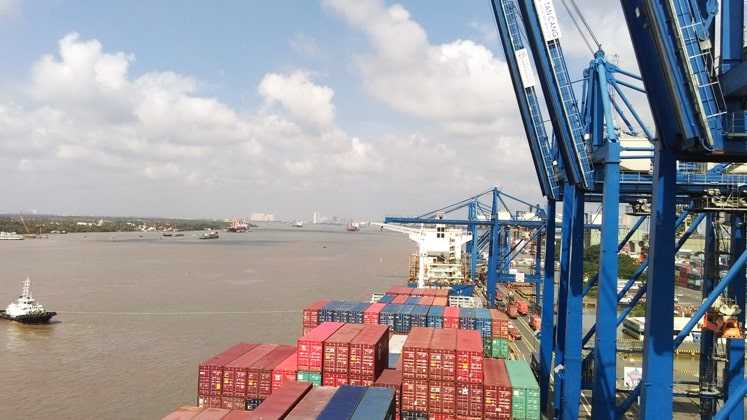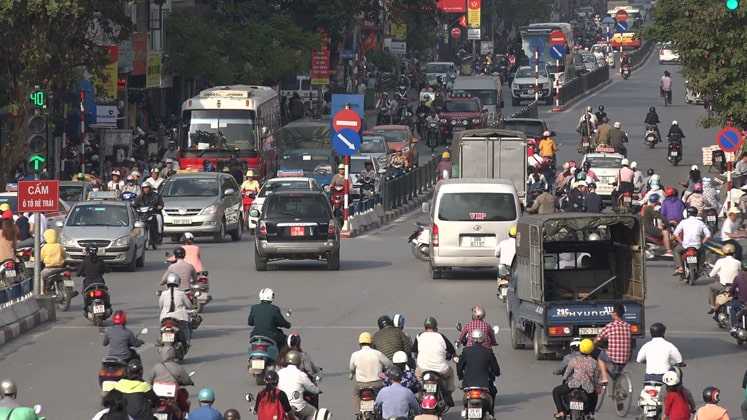
High logistics cost for exports is becoming a big concern for the apparel and textile sector in Vietnam. As of today, logistic cost in Vietnam is 3 times more than what it is in Singapore, 6 per cent higher than in Thailand, 7 per cent higher than in China and 12 per cent more than Malaysia. The numbers reveal the true story!
There are many factors that affect the high logistics costs in Vietnam. Transport infrastructure system is not synchronised – Low rate of application of information technology – The main transport fees, surcharges and taxes constitute a barrier for the logistics industry to develop. Capacity of logistics enterprises has not met the optimal demand. VLA (Vietnam Logistics Academy) Chairman emphasised that “nearly 70 per cent of Vietnam logistics enterprises are non-asset types; investment in equipment and transport means only accounts for 16 per cent warehouse and port, about 4 per cent of the remaining must be outsourced.” To reduce logistics cost, it is necessary to have synchronous solutions of Government, associations and enterprises to improve competitiveness.
Vietnamese logistics providers are smaller in number and can handle only 20 per cent of the market demand. The remaining 80 per cent is handled by foreign companies that have recently entered the country as mentioned by Nguyen Hong Truong, Deputy Minister of Transport . In fact, it was only in 2014 that Vietnam opened up its logistics market. In accordance with Vietnam’s commitment to the WTO, it has allowed wholly foreign-invested entities to set up logistics operations. Some companies have already come in and set up their offices with local joint venture partners to position themselves in the highly competitive logistics market. Specifically, most foreign logistic companies are positioning themselves as 3PL and 4PL service providers.
Although there is often a similarity in the services that each provider offers, the larger companies, typically international players, provide a high level of value-adding and specialisation, together with more sophisticated IT processes and support. Foreign competitors are also able to offer readymade industry or market ‘Solutions’ that have been developed and tested in other countries in the region and globally. These are often considered ‘safe’ options and are attractive to global companies that expect to have the same service experience in any region.
How critical is logistics to the growth of Vietnam?
Vietnam’s growth is being hindered by logistic expenses, which are between 20 and 25 per cent compared to USA at approximately 9 per cent. Currently, the logistics market worth around US $ 12 billion is concentrated around Ho Chi Minh City (HCMC), through which 70 per cent of the countries imports and exports transit.
Throwing more light on the same, David Riddle, Managing Director, Logistics Bureau said, “Logistics is critical to the long-term health of the Vietnam economy as they continue to increase the manufacturing sector across a number of industries. There is also an increasing focus on Industry 4.0 within Vietnam and ASEAN. This will require continued investment in digital technology, IoT etc., continued investment in new and upgraded logistics infrastructure, continued reduction of red tape to ease the administrative burden on SMEs, continued encouragement and support of private investment, continued focus on reducing/eliminating corruption/transparency of regulations, develop the ‘Logistics Talent Pool’.

Apparel and textile products industry is one of the main economic activities in Vietnam, reaching US $ 13 billion in exports in 2013. Over last 20 years, the industry has sustained double digit growth thereby becoming Vietnam’s biggest export earner and the world’s fifth biggest exporter, employing over 2.5 million people.
Vietnam’s apparel and textile product industry is a value-adding manufacturer. Countries add value along the logistics value chain, importing – adding value – then subsequently exporting to another country for the next stage of value adding. This process of value adding requires efficient logistics to import and export in order to be globally competitive. This is a challenge for Vietnam.
Chúc Thị Mỹ Nga, Sales Supervisor, Nhat Phong Van Joint Stock Company lays out some more challenges that need to be addressed in the interest of export growth from Vietnam:
Customs procedures are inefficient and still largely involve slow, manual processes
Inconsistent cargo inspection processes at ports and airports
Congested highways linking industrial centres with the country’s ports
Generally poor and unplanned transport infrastructure
Logistics costs are high, currently comprising around 20 per cent of gross domestic product (GDP)
Logistics facilities (warehouses and distribution centres) are often situated in remote locations, far from ports and centres of manufacture.
There are a number of key elements that the Government is focusing on, but Vietnam has geographic challenges in creating and upgrading physical infrastructure on a national basis. According to official Government statement, the opportunity is to improve connectivity in Shipping and Airports; Rail/Road/Ships/Barges and efficient connections between multi-modal freight modes will increase productivity significantly. These are long-term projects but are vital to support the continuing growth of the Vietnam economy and the logistics sector. As Sebastian Sasse, General Director, bei S4 Fashion Partner Vietnam Limited concludes: “We have no problems with our logistics in particular; also, the costs are in limit. But maybe this has something to do with our location!”

Post a Comment